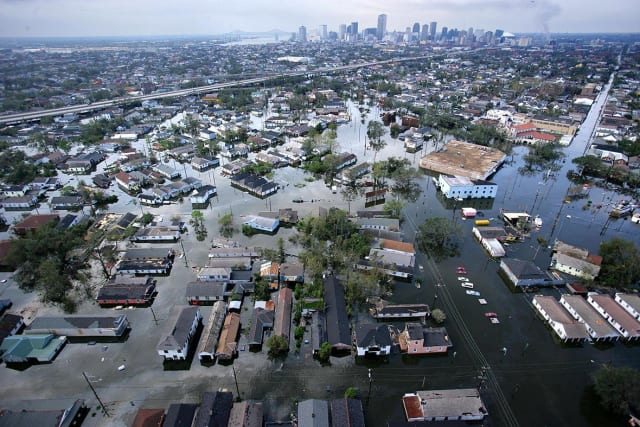
Floodwaters after Hurricane Katrina in 2005. With the threat of global climate change, the city could face another Katrina-like storm in the next 10 years (Image courtesy of AFP.)
Thirteen years ago, Hurricane Katrina hit New Orleans. Floodwaters from the storm breeched the city’s levee system, letting billions of gallons of water into the city and killing over a thousand people. Since then, federal, state and municipal governments have implemented improvements to the city’s drainage and levee systems. There is still a real risk that these water management systems might not be enough for the next big storm. Unfortunately, we won’t know until it happens.
Water, Water Everywhere
Because New Orleans is largely below sea level and has a rainy climate, it relies on two systems to stay above water level: a 192-mile-long flood prevention system of levees and floodwalls, and a complex system of pipes and pumps to get the water out of the city once it’s in there.
The flood barriers are the more well-known part of the city’s defenses, though not always for the right reasons. When Hurricane Katrina hit, the levees failed at 53 separate points. Since the flooding, the federal government authorized more than $14 billion on new floodwalls.
With that money, the Army Corps of Engineers built the levees stronger and taller, to a standard they call “the best risk reduction system the Greater New Orleans area has ever had.”
They built new levees and also built…

